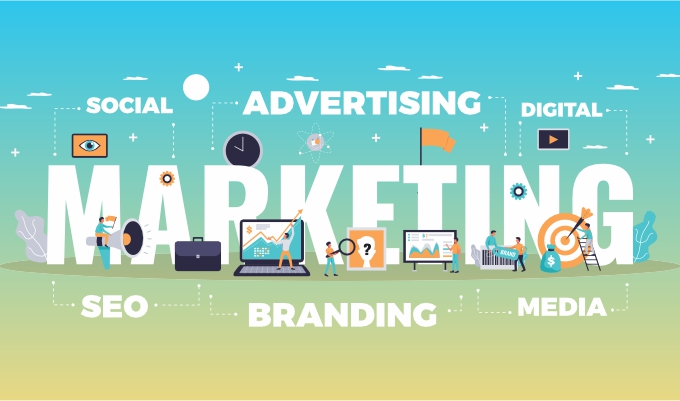
In this dramatic digital age, where people access everything from a myriad of devices with varying sizes, shapes, and colors, it becomes quintessential to strategize responsive design in an optimal way.
The design not only needs to be technically adaptive but also appealing enough to not lose its essence when viewed across multiple media.
Therefore, through this blog, we will try to understand and explore responsive design strategies in graphic designing in this contemporary digital world.
Understanding Responsive Design in Graphic Designing
As the name suggests, responsive design means a dynamic design that adapts itself to different devices, screens, and orientations without losing its essence and aesthetics. This way, the design becomes a one-size-fits-all solution that feels tailored to each person’s needs.
Now, this may sound quite straightforward by definition, but the nitty-gritty involved in this makes it a tough skill to master and implement in today’s competitive graphic designing world.
This is because, in today’s times, where aesthetics, functionality, and technology go hand in hand, responsive design is not just a technical requirement but also a creative challenge.
One has to think beyond static layouts and rigid 2D ideas to convey the brand’s message without any loss of visual appeal, no matter the device.
Well, the core ideas behind responsive design in graphic designing are flexible grids, fluid images, and CSS media queries. Let us explore them one by one.
Responsive Design Strategies in Graphic Designing
1. Fluid Grid Layouts
One of the primary strategies in responsive design is the use of dynamic fluid grid layouts. These grids are designed to reflow and readjust using relative units like percentages rather than fixed units like pixels.
Therefore, instead of a fixed rigid mosaic of blocks of graphics, fluid layouts rearrange themselves gracefully to attain the cohesiveness and structure needed at the moment on any device.
2. Flexible Images and Media
Earlier, we talked about fluid layouts, but flexible images and media are a challenge on another level. This adjustment and art direction can be complex to play out in real-time, but still, the basic idea is to set maximum widths to 100% so that images can shrink and expand without losing their essence and quality.
3. CSS Media Queries
This is where the maximum control is obtained in design responsiveness. Although operating CSS media queries requires advanced technical know-how, this is the best bet for graphic designers to tweak width, height, orientation, font size, padding, and margins to improve readability and visual hierarchy.
4. Mobile-First Design Approach
More than a strategy, having a mobile-first design approach is a principle or ethic in responsive design. Instead of designing for desktops first and then scaling downwards, designers think and design with the smallest screen resolution and scale up from there. This principle also works great to enhance touch response and address limited space issues effectively. Graphic Design Institutes in Rajkot often emphasize this approach in their curriculum to ensure that students are adept at modern, responsive design techniques.
5. Performance Optimization
Performance is a critical aspect of responsive design in graphic designing. High-resolution images, complex graphics, and heavy animations can slow down a site, especially on mobile networks. Designers should employ techniques like image optimization, lazy loading, and using scalable vector graphics (SVGs) to ensure fast loading times.
Additionally, designers can make use of modern web technologies, such as WebP images and responsive typography, which adapts font sizes based on screen dimensions and user preferences, to enhance both performance and accessibility.
6. Responsive Typography
Some ethics are better learned with practice. Responsive typography is one of those precious learnings for graphic designers. Typography is truly a hack to enhance readability and maintain aesthetic quality. Techniques like viewport width (vw) units manage text fluidity with screen size.
Moreover, the line height and length management through typography immensely enhances the reading or viewing experience without requiring excessive scrolling, eye strain, or strain on fingers.
7. Consistent User Experience
Consistency is key to loyalty and first impressions. Would you be impressed if the layout and design kept changing across devices? Would you feel the brand is reliable if their colors, palette, typography, and iconography kept changing across devices? It is the consistency in overall design, overall aesthetic hygiene, and readability that wins the trust of the user and compels them to return or at least make the call to action.
The Creative Edge in Responsive Design
As mentioned earlier in this blog, great responsive design is not just a technical prerequisite but also a challenge in the canvas of creativity.
It may seem that designers are working on redundant ideas when designing for digital projects.
It is your duty and right to experiment with layouts, animations, typographies, and user behaviors that match the needs of the time and tech. Responsive design in graphic designing is not just a technical necessity; it’s a canvas for creativity.
Conclusion: The Future of Responsive Design in Graphic Designing
To the aspiring graphic designers aiming to refine their responsive design skills, here is a word of caution—not literal but metaphorical.
The caution is that the term “responsive design” may or may not remain popular for long. You know why? Because in the near future, technology is going to exponentially transform the way we interact and immerse ourselves in illustration and graphic designs.
Also Read:
The full-blown alteration through technology may not be enough to be contained in the term “responsive design.” We can expect better foldable phones, wall-sized screens, screens as projects and casts, and non-hard screens. Who knows what’s next?
It will take a whole new set of efforts to systematize the responsiveness in graphic designs. In a future that is not far, knowledge of technology will play the most crucial role in reading users’ aesthetic preferences and what makes their content consumption truly experiential. So the final piece of advice? Learn technology as much as traditional grammar in graphic design. And yeah, don’t leave behind the creativity!
Latest Articles
- All Posts
- Blog
- Graphic Design
- Uncategorized







Wonderful post however I was wondering if you could write
a litte more on this subject? I’d be very grateful if you could
elaborate a little bit further. Cheers!
Top 7 Responsive Design Strategies in Graphic Designing – ArtShala
afrspqdlgyd
[url=http://www.g79lnxvwh3c7obqz8v1406j489c1820ns.org/]ufrspqdlgyd[/url]
frspqdlgyd http://www.g79lnxvwh3c7obqz8v1406j489c1820ns.org/